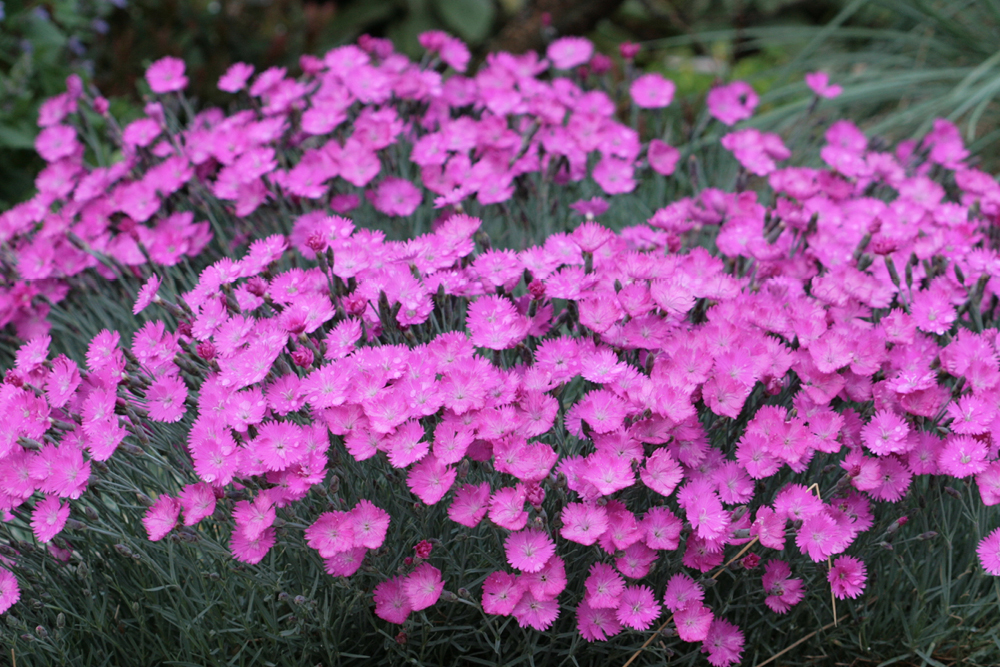Dianthus, a genus known as carnations, pinks, or sweet Williams, offers a tapestry of history and horticulture stretching back to ancient Europe and Asia. The legacy of these fragrant blooms is cultivated by the Greeks and Romans cherished through the medieval and Renaissance periods and perpetuated by modern breeders who have nurtured a plethora of cultivars and hybrids. Today, their vibrant palette and varied forms have secured Dianthus a celebrated place in domestic gardens, public spaces, and floral compositions, as well as a cultural resonance with festivities such as Mother’s Day.
Origin of the Name
The name “Dianthus” originated from Greek and was coined by the ancient Greek botanist Theophrastus. It combines two words: “Dios,” meaning divine, and “Anthos,” meaning flower. Thus, Dianthus translates to “divine flower” or “flower of the gods,” reflecting the high esteem these flowers held in ancient cultures. This nomenclature underscores the beauty and fragrance of the Dianthus blooms and their significance in ancient Greek society, where they were likely associated with the gods and used in ceremonial offerings. The name has persisted through centuries, highlighting these flowers’ lasting appeal and cultural importance. The genus encompasses over 300 species, allowing it to thrive across diverse climates and settings. Such variety renders Dianthus a historic favorite among gardeners and one of the most venerable of cultivated flowers, with a cultivation history spanning over two millennia.
Additional Uses
Beyond their ornamental appeal, Dianthus flowers carry deep symbolic meaning; they embody love, fascination, and distinction. Hues like red and white offer additional significance, from deep affection to pure talent. The flowers are not just a visual delight but also a sensory one, emitting a spicy, clove-like fragrance that enhances gardens and arrangements.
Their culinary application adds another dimension to their charm. The petals of Dianthus are edible, providing a decorative element with a subtle zest to salads, desserts, and drinks when organically cultivated. Historically, Dianthus also served medicinal purposes and was utilized for its antiseptic qualities to treat wounds.
Adaptability is another strength of the Dianthus genus. Many of its species boast drought resistance, an attribute highly valued in water-conscious gardening practices such as xeriscaping. In ecological terms, these flowers are benefactors of biodiversity, attracting pollinators like butterflies and bees and thereby supporting ecosystem health.
Cultivation and Care
In New Jersey, to ensure successful cultivation of Dianthus, plant them in spring or early fall in a spot with full sun and well-draining slightly alkaline soil. Space them appropriately and water when the top inch of soil is dry, avoiding wetting the foliage. Fertilize with a balanced feed in the spring and deadhead flowers to promote further blooming. Prepare for winter with mulching, without covering the crowns of the plants, and choose hardy varieties suited to the Northeast climate. Regular maintenance and monitoring for pests and diseases will keep your Dianthus flourishing.
The carnation is famous for its enduring beauty and long vase life within the Dianthus family, making it a staple in bouquets. With its confluence of beauty, aromatic allure, and practical benefits, the Dianthus genus continues to be a beloved addition to the world’s floral diversity.

